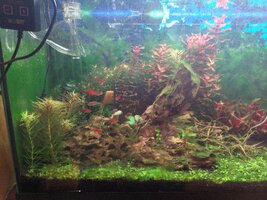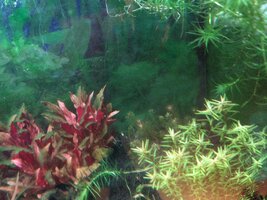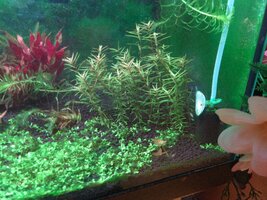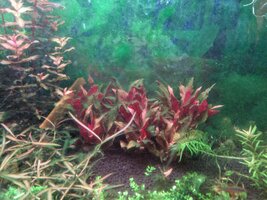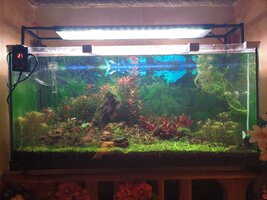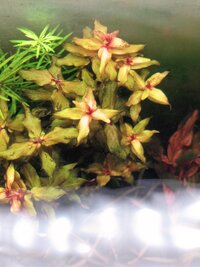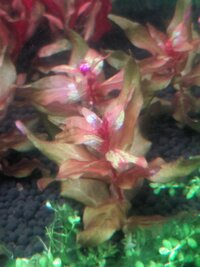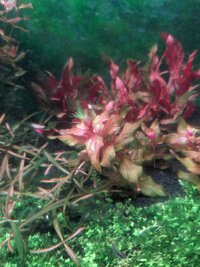Hi,
Unfortunately I'm having a lot of problems with algae.
I tried not fertilizing, increasing or decreasing the light intensity, I even rescaped the tank and added AS from Tropica. I'll give you a little knowledge of the parameters of my aquarium.
1) The tank is 80l
2) May 2023
3) Oase Biomaster Thermo 600
4) Chihiros WRGB2 Slim60 (70% for 7h)
5) Tropica Aquarium soil
7) APT3 Complete 2ml x day
8) WC 50% every 7 days with tap water (tap water param - pH 7.6, kh8, tds 107)
9) Rotala macrandra, AR rosanervig, rotala Wallichi, egeria densa, Montecarlo, hygrophila araguaia, limnophila hippuridoides, rotala orange juice, rotala h'ra, bacopa caroliniana, bucephalandra Kedagang purple, crypto flamingo
10) I use it but I have a CO2 profile acquired in 2 days of constant checking. pH before CO2 on 7.4 (8.0 degassed), CO2 goes on at 07:00, the light at 09:00, when light is on the pH is 6.7, after 1h it drop to pH 6.6 and stays at this level for the entire photoperiod.
11) 12 celestial pearl danio, 10 ember tetra, 6 otocinclus, 2 amano shrimp, 4 pygmy Cory.
The tank has a surface skimmer.
Water test:
No ammonia and nitrites
5-10ppm nitrates
Usually 0.10-0.25ppm po4, I tried to raise it to 1ppm with KH2PO4 but hair algae blooms,
kh 3, around 10gh
the egeria densa is uprooted because I need to move it somewhere
Unfortunately I'm having a lot of problems with algae.
I tried not fertilizing, increasing or decreasing the light intensity, I even rescaped the tank and added AS from Tropica. I'll give you a little knowledge of the parameters of my aquarium.
1) The tank is 80l
2) May 2023
3) Oase Biomaster Thermo 600
4) Chihiros WRGB2 Slim60 (70% for 7h)
5) Tropica Aquarium soil
7) APT3 Complete 2ml x day
8) WC 50% every 7 days with tap water (tap water param - pH 7.6, kh8, tds 107)
9) Rotala macrandra, AR rosanervig, rotala Wallichi, egeria densa, Montecarlo, hygrophila araguaia, limnophila hippuridoides, rotala orange juice, rotala h'ra, bacopa caroliniana, bucephalandra Kedagang purple, crypto flamingo
10) I use it but I have a CO2 profile acquired in 2 days of constant checking. pH before CO2 on 7.4 (8.0 degassed), CO2 goes on at 07:00, the light at 09:00, when light is on the pH is 6.7, after 1h it drop to pH 6.6 and stays at this level for the entire photoperiod.
11) 12 celestial pearl danio, 10 ember tetra, 6 otocinclus, 2 amano shrimp, 4 pygmy Cory.
The tank has a surface skimmer.
Water test:
No ammonia and nitrites
5-10ppm nitrates
Usually 0.10-0.25ppm po4, I tried to raise it to 1ppm with KH2PO4 but hair algae blooms,
kh 3, around 10gh
the egeria densa is uprooted because I need to move it somewhere
Attachments
Last edited:


